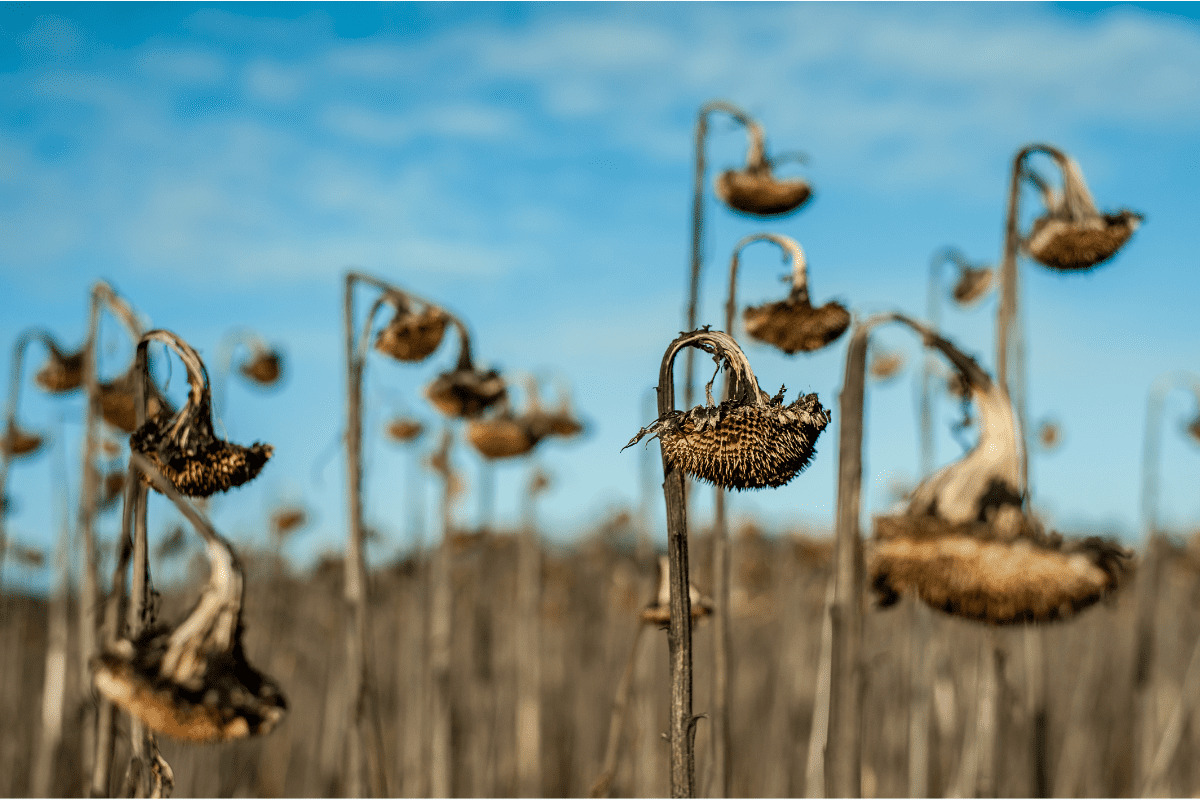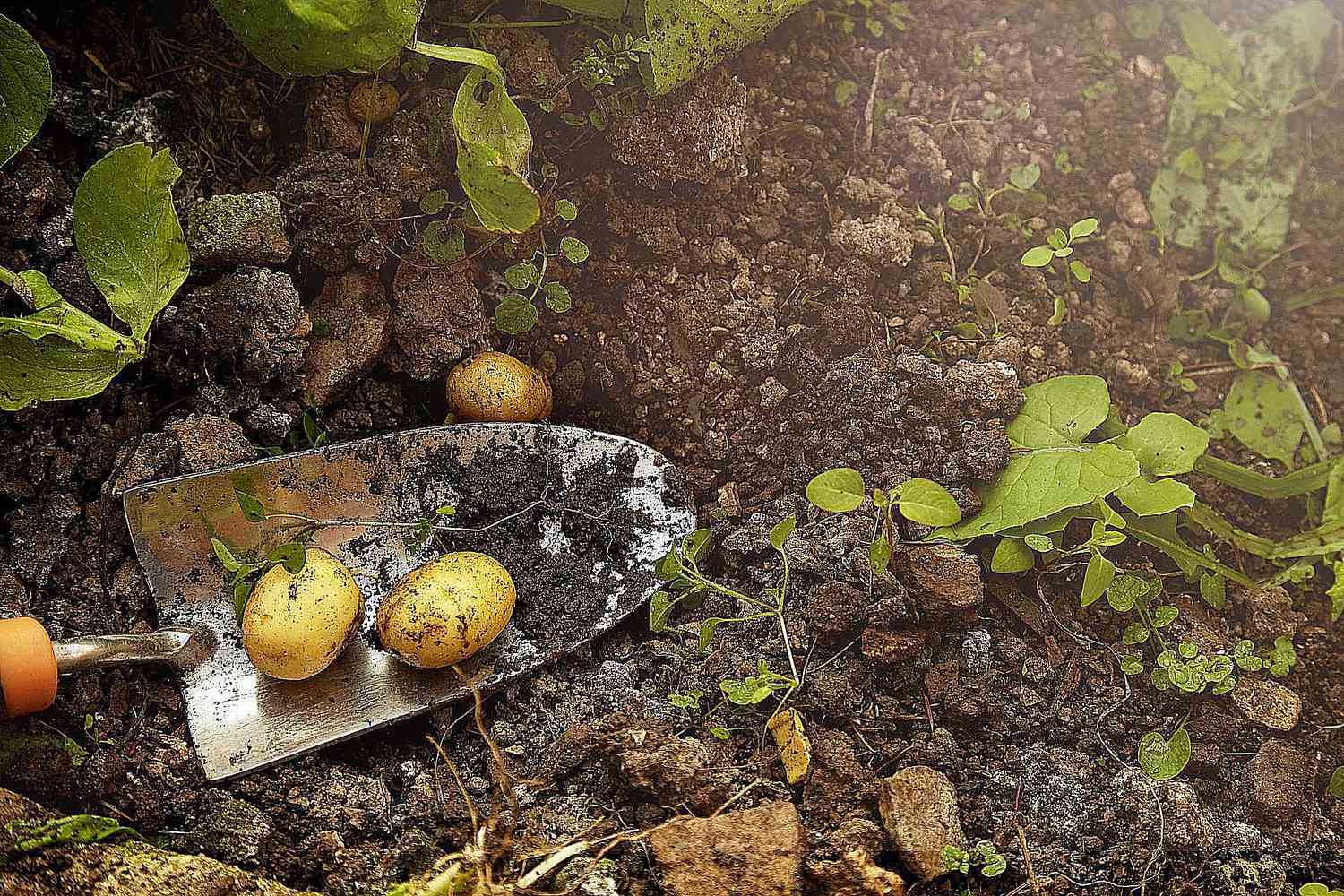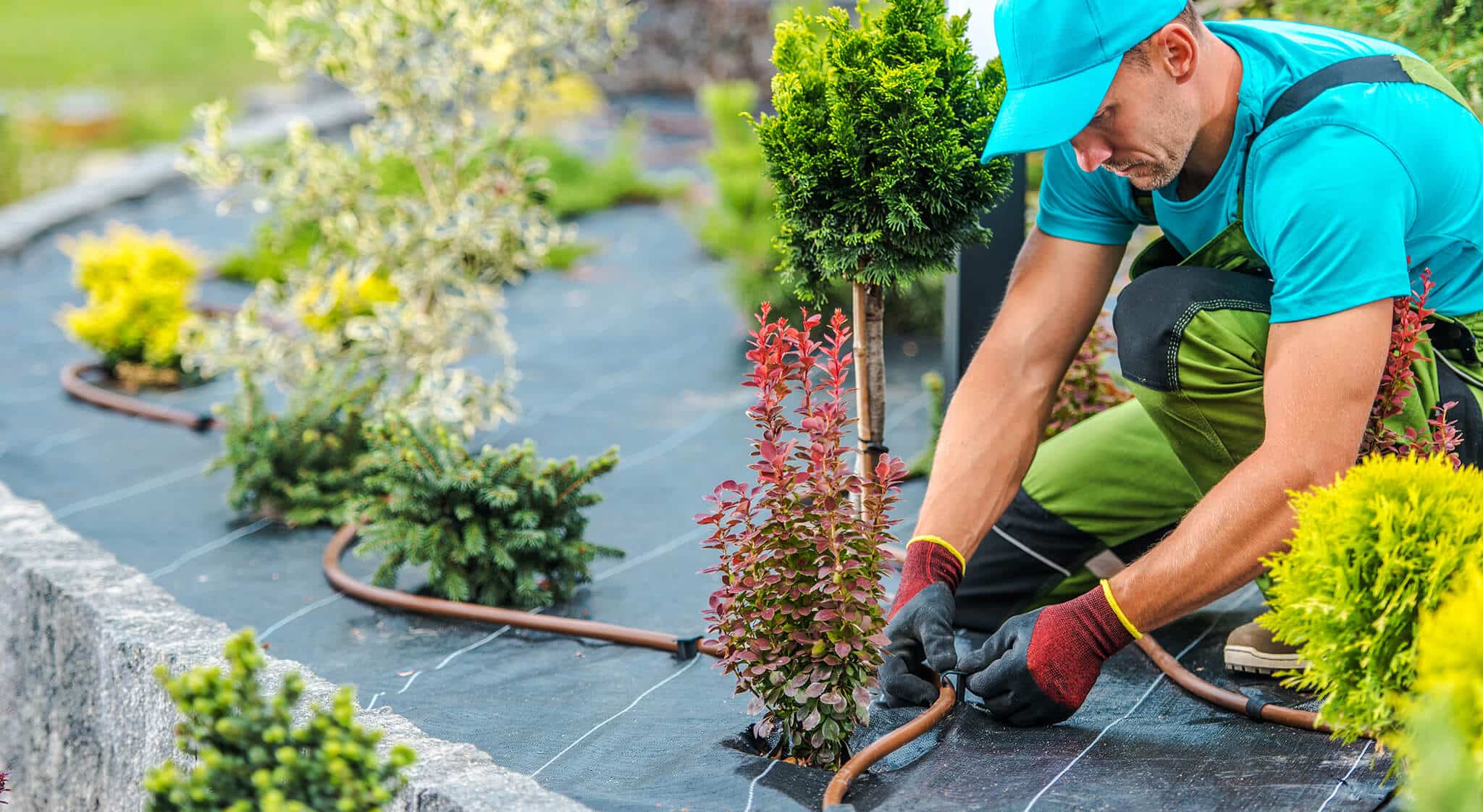Home>Gardening News and Trends>Latest News>What Do You Do In Landscaping


Latest News
What Do You Do In Landscaping
Modified: January 22, 2024
Discover the latest news and trends in landscaping. From design ideas to maintenance tips, stay updated with the latest insights in the industry.
(Many of the links in this article redirect to a specific reviewed product. Your purchase of these products through affiliate links helps to generate commission for Chicagolandgardening.com, at no extra cost. Learn more)
Table of Contents
- Introduction
- Understanding Landscaping
- Essential Skills in Landscaping
- Planning and Designing a Landscape
- Installing Landscape Features
- Selecting and Planting Vegetation
- Maintaining and Caring for Landscapes
- Landscaping Tools and Equipment
- Sustainability in Landscaping
- Challenges and Opportunities in Landscaping
- Conclusion
Introduction
Welcome to the wonderful world of landscaping! If you have a passion for enhancing outdoor spaces, creating beautiful gardens, and transforming landscapes into inviting havens, then you’re in the right place. Landscaping is an art form that combines creativity, practicality, and an understanding of nature to create stunning outdoor environments.
Whether it’s a small backyard, a sprawling estate, or a public park, landscaping plays a vital role in improving the aesthetics and functionality of any outdoor space. It involves designing, planning, installing, and maintaining various features such as gardens, pathways, patios, and water elements, among others.
Landscaping is not just about making things look pretty; it’s about creating harmonious and sustainable spaces that serve both practical and aesthetic purposes. It requires a combination of artistic vision, technical knowledge, and a deep understanding of plants, horticulture, and environmental factors.
In this article, we will explore the world of landscaping and delve into the essential skills, knowledge, and techniques required to excel in this field. From planning and design to installing features and maintaining landscapes, we will cover it all.
So, whether you’re an aspiring landscaper looking to start a career, a homeowner wanting to spruce up your yard, or simply someone interested in learning about this fascinating subject, this article will serve as your guide to the exciting world of landscaping.
Understanding Landscaping
Landscaping is the art and science of modifying and beautifying outdoor spaces. It involves creating a harmonious balance between nature and human intervention to enhance the visual appeal and functionality of a given area. Landscapers work with various elements such as plants, hardscapes, water features, and lighting to transform ordinary spaces into stunning landscapes.
One of the key aspects of landscaping is understanding the natural elements of the environment. This includes studying the topography, climate, soil conditions, and natural features of the area. By understanding these factors, landscapers can make informed decisions about plant selection, irrigation methods, and the overall design to ensure the sustainability and longevity of the landscape.
Landscaping can be broadly categorized into two types: softscaping and hardscaping. Softscaping refers to the use of plants, trees, shrubs, and other living elements to create a lush and vibrant landscape. On the other hand, hardscaping involves the use of non-living elements like stone, wood, concrete, and metal to create structures such as patios, pathways, retaining walls, and water features.
Landscaping also takes into consideration the various needs and preferences of the client. Whether it’s a low-maintenance garden, a child-friendly backyard, or a formal outdoor space, landscapers work closely with clients to understand their vision and create a design that meets their requirements.
Furthermore, sustainable landscaping practices have gained prominence in recent years. Landscapers now focus on incorporating eco-friendly components and techniques to minimize environmental impact and conserve resources. This includes using drought-tolerant plants, rainwater harvesting, efficient irrigation systems, and native plant species to promote biodiversity and reduce water consumption.
In the next sections of this article, we will explore the essential skills and techniques required to excel in the field of landscaping. From planning and designing to installing features and maintaining landscapes, we will take a comprehensive look at the various aspects of this exciting profession.
Essential Skills in Landscaping
Being a successful landscaper requires a diverse set of skills and knowledge. Beyond having a passion for nature and design, here are some essential skills that every landscaper should possess:
- Creativity: Landscaping is an art form, and creativity is essential in designing unique and visually appealing landscapes. Being able to envision how various elements will work together and create a cohesive space is crucial for success in this field.
- Plant and Horticulture Knowledge: Having a solid understanding of different plant species, their growth habits, and their specific care requirements is fundamental in landscaping. From selecting the right plants for a particular environment to properly maintaining them, a deep knowledge of horticulture is vital.
- Design and Planning: Landscapers must possess strong design and planning skills to create functional and aesthetically pleasing outdoor spaces. This includes the ability to create scaled drawings, analyze site conditions, and incorporate elements such as pathways, seating areas, and water features into the overall design.
- Knowledge of Construction Techniques: Landscaping often involves the installation of various hardscaping elements such as patios, decks, fences, and retaining walls. Understanding construction techniques and having knowledge of materials, tools, and safety protocols is crucial for successful installation.
- Problem-Solving: Every landscaping project comes with its own set of challenges, whether it’s dealing with poor soil conditions, drainage issues, or existing structures. A skilled landscaper is adept at finding innovative solutions and adapting to unforeseen circumstances.
- Time Management: Completing landscaping projects within deadlines requires effective time management skills. Landscapers must be able to plan their work, prioritize tasks, and allocate resources efficiently to ensure timely completion of projects.
- Customer Service: Working closely with clients is an integral part of landscaping. Landscapers should have good communication and interpersonal skills to understand the client’s needs, provide recommendations, and ensure client satisfaction throughout the project.
- Physical Stamina: Landscaping is a physically demanding job that often involves lifting heavy materials, digging, and working outdoors in various weather conditions. Possessing good physical stamina and being able to work safely and efficiently is essential.
Developing and honing these skills through education, experience, and continuous learning will help landscapers excel in their profession. The combination of technical expertise, artistic vision, and a passion for nature is what sets exceptional landscapers apart in the field of landscaping.
Planning and Designing a Landscape
Planning and designing are crucial stages in the landscape creation process. It is during this phase that landscapers transform ideas into actionable plans and bring their vision to life. Here are the key steps involved in planning and designing a landscape:
- Site Analysis: The first step in planning is conducting a thorough site analysis. This includes evaluating the soil conditions, drainage patterns, existing vegetation, and any natural or man-made features on the site. Understanding these factors helps the landscaper make informed decisions and design a landscape that is well-suited to the site’s unique characteristics.
- Goal Setting: Establishing clear goals and objectives is essential to ensure that the landscape design meets the client’s needs and expectations. This involves determining the desired functionality, aesthetic preferences, and any specific requirements or challenges to address.
- Conceptual Design: Based on the site analysis and goals set, a conceptual design is developed. This includes sketching out the general layout, identifying key features and focal points, and exploring different design options. It’s an opportunity to explore creativity and translate ideas into visual representations.
- Selection of Elements: Once the conceptual design is approved, the next step is to select the specific elements to incorporate into the landscape. This includes choosing plant species, hardscaping materials, lighting fixtures, and other features that align with the design concept and goals.
- Scale Drawings: Creating accurate scale drawings is critical for the implementation of the landscape design. These drawings provide detailed information on the placement of features, measurements, and the overall layout. They serve as a blueprint for the installation process.
- Consideration of Sustainability: Sustainable and eco-friendly practices should be integrated into the landscape design. This involves selecting native plants that require minimal water and maintenance, incorporating efficient irrigation systems, and utilizing materials with low environmental impact.
- Budgeting: As part of the planning process, careful consideration should be given to budgeting and cost estimation. Landscapers need to evaluate the costs associated with purchasing materials, installation, and ongoing maintenance to ensure that the design remains within the client’s budget.
- Collaboration with Clients: Effective communication and collaboration with clients throughout the planning phase is crucial. Landscapers need to incorporate client feedback and ensure that the design aligns with their preferences and vision.
By following these steps, landscapers can create a well-thought-out landscape design that is both functional and visually appealing. The planning and designing phase sets the foundation for the successful implementation and execution of the landscape project.
Installing Landscape Features
Once the landscape design has been finalized, the next step is to bring the vision to life by installing the various elements and features. This phase requires careful execution and attention to detail to ensure that the design is implemented as intended. Here are the key aspects involved in installing landscape features:
- Site Preparation: Before installation begins, the site needs to be prepared. This includes clearing any existing vegetation, leveling the ground if necessary, and addressing any soil improvement or drainage issues.
- Hardscape Installation: The installation of hardscape elements such as pathways, patios, retaining walls, and water features comes next. This involves precise measurements, proper leveling, and using the appropriate materials and techniques for each element.
- Plant Installation: Once the hardscaping is complete, it’s time to introduce the plant life into the landscape. This includes selecting the right plants for the specific environment, properly placing and spacing them according to the design, and ensuring they are planted at the appropriate depth.
- Irrigation and Lighting: Installing irrigation systems is crucial to ensure that the plants receive adequate water. This may involve the installation of sprinklers, drip irrigation systems, or a combination of both. Additionally, landscape lighting can be installed to enhance the ambiance and functionality of the space.
- Finishing Touches: The final step in installation is adding the finishing touches. This may include adding mulch or decorative rocks around plants, installing edging materials to define borders, and cleaning up the site to ensure a polished look.
- Quality Control: Throughout the installation process, frequent quality checks are essential to ensure that everything is executed according to the design and meets the client’s expectations. This involves assessing the accuracy of measurements, the integrity of materials, and addressing any issues promptly.
- Collaboration with Contractors: In some cases, landscapers may need to collaborate with other contractors, such as electricians or plumbers, for specific installation tasks. Clear communication and coordination are vital to ensure a seamless integration of different elements.
Installing landscape features requires a combination of technical skill, attention to detail, and the ability to adapt to unforeseen challenges. By following proper installation techniques and focusing on quality, landscapers can transform the design plan into a stunning and functional outdoor space.
Selecting and Planting Vegetation
The selection and planting of vegetation are crucial steps in creating a lush and vibrant landscape. The right choice of plants can greatly enhance the overall beauty and functionality of the space. Here’s what you need to know about selecting and planting vegetation:
- Consider the Environment: Before selecting plants, it’s important to assess the environmental conditions of the site. Factors such as sunlight exposure, soil type, and climate will determine which plants are suitable for the area. Native plants are often a good choice as they are adapted to local conditions and require less maintenance.
- Determine the Purpose: Consider the purpose of the plants in the landscape. Are they meant to provide privacy, create focal points, attract wildlife, or serve as a backdrop for other features? Understanding the role each plant will play in the overall design will help in making appropriate selections.
- Variety and Balance: Create interest in the landscape by selecting a variety of plant species with different textures, colors, and heights. Achieving a balanced composition of plants will add visual appeal and create a more dynamic and harmonious environment.
- Understand Growth Habits: Familiarize yourself with the growth habits of the plants you choose. Consider factors such as mature size, spread, and growth rate. This will help prevent overcrowding and ensure that plants have enough space to thrive without encroaching on each other.
- Seasonal Interest: Select plants that offer visual interest throughout the seasons. Look for species that bloom at different times, have attractive foliage or bark, or produce colorful berries or fall foliage. This will ensure that your landscape looks appealing year-round.
- Planting Techniques: When it comes to planting, follow proper techniques to give your plants the best chance of survival. Dig a hole that is wider and slightly shallower than the plant’s root ball. Loosen the roots, place the plant in the hole, backfill with soil, and gently firm it around the base of the plant. Water thoroughly after planting to help settle the soil.
- Maintenance Considerations: Keep in mind the maintenance requirements of the plants you select. Some may need regular pruning, fertilizing, or protection from pests and diseases. Choose plants that align with the amount of time and effort you’re willing to dedicate to their care.
- Ongoing Care: After planting, provide proper care to help the plants establish and thrive. This includes regular watering, mulching to retain moisture, and periodic fertilization. Regular monitoring for any signs of stress or disease will allow for timely intervention to maintain the health of your vegetation.
By carefully selecting and planting vegetation, you can create a diverse and thriving landscape that adds beauty and enhances the overall aesthetic of your outdoor space. Remember to consider environmental factors, balance and variety, growth habits, and ongoing maintenance to ensure the long-term success of your plantings.
Maintaining and Caring for Landscapes
Maintaining a well-kept landscape is essential for preserving its beauty and ensuring its longevity. Regular care and attention will help your landscape thrive and continue to impress. Here are some key aspects to consider when maintaining and caring for your landscape:
- Watering: Proper watering is crucial for the health of your plants. Different species have varying watering requirements, so it’s important to research and understand the needs of each plant. Water deeply and infrequently, allowing the soil to dry out slightly between waterings to encourage strong root growth.
- Pruning and Trimming: Pruning and trimming are necessary to maintain the shape, size, and overall appearance of your landscape. Remove dead or diseased branches, shape hedges and bushes, and control the growth of vines. Pruning promotes healthy growth, improves flowering, and ensures better light penetration.
- Weeding: Weeds can compete with your plants for nutrients, water, and sunlight. Regular weeding helps keep weeds under control and prevents them from taking over your landscape. Remove weeds by hand or use appropriate herbicides sparingly and carefully.
- Fertilizing: Regular fertilization provides essential nutrients for your plants’ growth and overall health. Use organic or slow-release fertilizers that are appropriate for the specific needs of your landscape. Follow the instructions on the fertilizer package for the correct application rate and timing.
- Monitoring for Pests and Diseases: Keep a watchful eye for any signs of insect pests or diseases that may impact your plants. Early detection allows for prompt treatment and minimizes the risk of damage. Utilize appropriate pest control methods, such as natural predators, traps, or targeted sprays.
- Managing Mulch: Mulch not only helps retain moisture in the soil but also helps suppress weeds and regulate soil temperature. Regularly check and replenish mulch to maintain an adequate layer around your plants. Avoid piling mulch against the trunk or stems of plants, as this can lead to moisture and disease issues.
- Lawn Care: If you have a lawn, proper care is essential. Regular mowing, aerating, and dethatching keep the grass healthy and promote thick growth while preventing weed invasion. Water your lawn deeply and less frequently, and adjust the cutting height based on the season and grass type.
- Seasonal Maintenance: Different seasons bring different maintenance tasks. Prepare your landscape for winter by protecting tender plants, clearing debris, and shutting off irrigation systems. In spring, remove any winter damage and prepare the soil for new growth. Stay on top of tasks throughout the year to ensure your landscape’s overall health and appearance.
- Professional Help: If maintaining and caring for your landscape becomes overwhelming or beyond your expertise, consider hiring a professional landscape maintenance company. They can provide regular maintenance, advice on plant care, and specialized services to keep your landscape in top condition.
By practicing regular maintenance and providing proper care for your landscape, you can enjoy a beautiful and healthy outdoor space for years to come. Remember that each landscape is unique, so adjust your maintenance routines accordingly based on the specific needs of your plants and environment.
Landscaping Tools and Equipment
Landscaping requires a variety of tools and equipment to efficiently and effectively carry out various tasks. Having the right tools not only enhances productivity but also ensures the quality of work. Here are some essential tools and equipment commonly used in landscaping:
- Shovels: Shovels are versatile tools used for digging, moving soil, and planting. Different types of shovels, such as square-point, round-point, and garden spades, are available for various purposes.
- Rakes: Rakes are essential for leveling soil, removing debris, and spreading mulch. Leaf rakes, landscape rakes, and garden rakes each serve different purposes and come in various sizes and designs.
- Pruning Tools: Pruning shears, loppers, and pruning saws are necessary for shaping and maintaining the health of plants by removing dead, damaged, or overgrown branches.
- Lawn Mower: A good-quality lawn mower is essential for maintaining a healthy and well-manicured lawn. Options include push mowers, self-propelled mowers, and riding mowers, depending on the size and complexity of the landscape.
- String Trimmer: String trimmers, also known as weed eaters or weed whackers, are used to trim grass and weeds in hard-to-reach areas like edges, corners, and around trees.
- Hedge Trimmer: Hedge trimmers are designed specifically for shaping and maintaining hedges, shrubs, and bushes. They provide clean and precise cuts for achieving desired shapes and sizes.
- Wheelbarrow or Garden Cart: These tools are essential for transporting heavy materials, such as soil, mulch, plants, or rocks, around the landscape. They help reduce physical strain and improve efficiency.
- Hand Tools: Hand tools, including trowels, cultivators, pruners, and weeding tools, are essential for smaller-scale gardening tasks such as planting, weeding, and cultivating the soil.
- Irrigation Tools: Tools such as hoses, sprinklers, timers, and irrigation system components are necessary for efficient watering of plants and maintaining proper moisture levels in the landscape.
- Landscape Fabric and Mulch: Landscape fabric helps prevent weed growth by acting as a barrier, while mulch helps retain moisture, suppress weeds, and regulate soil temperature. These materials are essential for maintaining a healthy landscape.
Other equipment such as tillers, chainsaws, leaf blowers, and aerators may also be needed depending on the specific requirements of the landscape. It’s important to invest in high-quality tools and equipment, maintain them properly, and always prioritize safety while using these tools.
Having the right tools and equipment ensures that landscaping tasks are performed efficiently and with precision, allowing you to create and maintain a beautiful and well-manicured landscape.
Sustainability in Landscaping
Sustainability has become an increasingly important aspect of landscaping as we strive to minimize our environmental impact and create landscapes that are both beautiful and eco-friendly. Incorporating sustainable practices into landscaping not only helps preserve the natural ecosystem but also reduces maintenance requirements and saves valuable resources. Here are some ways to promote sustainability in landscaping:
- Native Plants: Choosing native plants that are adapted to the local climate and soil conditions is key to sustainable landscaping. Native plants are often more resilient against pests, diseases, and drought, requiring less water, fertilizer, and maintenance.
- Xeriscaping: Xeriscaping is a water-efficient landscaping technique that focuses on using drought-tolerant plants, proper soil preparation, and efficient irrigation systems. Xeriscaping reduces water consumption significantly while still creating visually appealing landscapes.
- Smart Irrigation: Utilizing smart irrigation systems with weather sensors and timers can optimize water usage by irrigating plants based on their specific needs and weather conditions. This reduces water waste and prevents overwatering.
- Mulching: Applying a layer of organic mulch around plants helps conserve moisture, suppress weeds, and regulate soil temperature. Mulch reduces the need for frequent watering and weed control while promoting healthy plant growth.
- Composting: Creating and using compost made from organic waste materials as a natural fertilizer enriches the soil, enhances plant health, and reduces the need for synthetic fertilizers. Composting also reduces waste going to landfills and closes the nutrient loop.
- Water Harvesting: Harvesting rainwater through systems like rain barrels or cisterns allows for the collection and storage of rainwater. This water can then be used for landscape irrigation, reducing dependence on potable water.
- Integrated Pest Management: Adopting integrated pest management techniques involves using a combination of cultural, biological, and minimal chemical intervention to control pests and diseases. This approach minimizes the use of synthetic pesticides, protecting beneficial insects and the overall ecosystem.
- Conservation of Wildlife: Designing landscapes that provide habitats and food sources for birds, butterflies, bees, and other beneficial wildlife promotes biodiversity and supports the natural ecosystem. Incorporating native plants and creating nesting areas can attract and sustain wildlife populations.
- Recycling and Reusing: Implementing practices such as recycling green waste, reusing construction materials, and choosing sustainably sourced products reduces waste and promotes responsible resource management in landscaping projects.
- Education and Outreach: Promoting sustainability in landscaping involves educating clients, homeowners, and the community about the benefits and practices of sustainable landscaping. Encouraging awareness and providing resources and guidelines can drive positive change.
By embracing sustainable landscaping practices, we can create environmentally friendly landscapes that thrive in harmony with nature. From conserving water and reducing waste to promoting biodiversity and minimizing chemical use, sustainable landscaping fosters a healthier and more resilient environment for current and future generations to enjoy.
Challenges and Opportunities in Landscaping
The field of landscaping presents both challenges and opportunities for professionals in the industry. Understanding and addressing these challenges while embracing the opportunities can lead to growth, innovation, and success. Here are some of the key challenges and opportunities in landscaping:
- Climate Change: Climate change poses challenges in landscaping, as shifting weather patterns, increased temperatures, and changing precipitation levels affect plant selection, water management, and overall landscape sustainability. However, it also presents opportunities to explore resilient plant species, implement innovative irrigation techniques, and design landscapes that can adapt to changing conditions.
- Resource Management: Proper resource management is crucial in landscaping, including efficient water usage, responsible waste management, and sustainable use of materials. The challenge lies in balancing the aesthetic demands of clients with conservation goals. However, implementing sustainable practices can reduce resource consumption, lower costs, and attract environmentally-conscious clientele.
- Urbanization and Space Constraints: With urbanization, landscapes are becoming smaller, and space constraints pose challenges in designing and creating functional and aesthetically pleasing outdoor areas. However, this also opens opportunities for creative solutions, vertical gardening, rooftop gardens, and small-scale urban landscapes that maximize limited space.
- Client Expectations and Education: Meeting client expectations while adhering to sustainable practices can be a challenge. Many clients may prioritize immediate aesthetics over long-term sustainability. However, by educating clients about the benefits of sustainable landscaping, sharing success stories, and providing innovative design options, professionals can encourage more eco-friendly choices.
- Technological Advancements: Technological advancements offer opportunities to enhance efficiency, design capabilities, and maintenance practices in landscaping. Tools, software applications, and remotely accessible irrigation systems can streamline workflows and improve communication with clients. Embracing technology can lead to more effective project management and customer satisfaction.
- Industry Regulations and Standards: Landscaping professionals must stay updated with industry regulations, best practices, and emerging standards. Compliance with environmental regulations relating to water usage, chemical applications, and waste disposal is essential. Adhering to high-quality standards and certifications can differentiate professionals in a competitive market.
- New Plant Varieties and Innovations: Continuous research and development in plant breeding and horticulture provide landscaping professionals with exciting opportunities to explore new plant varieties, improved disease resistance, and drought-tolerant species. Incorporating these innovations can enhance the diversity and resilience of landscapes.
- Social and Environmental Awareness: Increasing social and environmental awareness has created a demand for sustainable and eco-friendly landscaping practices. Professionals who position themselves as leaders in sustainability and environmental stewardship have a competitive advantage and can attract environmentally-conscious clients who prioritize ethical and responsible landscaping.
By embracing these challenges and capitalizing on the opportunities, landscaping professionals can navigate the ever-evolving industry landscape. Adapting to change, staying informed, and providing innovative and sustainable solutions will position individuals and businesses for long-term success in the field of landscaping.
Conclusion
Landscaping is a dynamic and rewarding field that allows professionals to combine their creativity with a deep understanding of nature to create stunning outdoor spaces. Throughout this article, we have explored the various aspects of landscaping, highlighting the essential skills, techniques, and considerations involved in designing, installing, and maintaining landscapes.
From understanding the importance of site analysis and goal-setting to selecting the right plants, installing landscape features, and caring for vegetation, each step in the landscaping process contributes to the creation of beautiful and sustainable outdoor environments.
We have also touched on the significance of sustainability in landscaping, where innovative practices can help conserve resources, minimize environmental impact, and promote biodiversity. By adopting sustainable landscaping techniques and educating clients and homeowners, landscaping professionals can contribute to a more eco-friendly and resilient world.
While landscaping presents its fair share of challenges, such as climate change, resource management, and client expectations, these challenges also bring forth opportunities for growth, innovation, and creativity. Adapting to technological advancements, staying abreast of industry regulations and standards, and embracing new plant varieties and design innovations can propel professionals towards success.
In conclusion, landscaping is an intricate blend of art, science, and environmental stewardship. By leveraging our expertise, skills, and passion for the natural world, we can create outdoor spaces that not only captivate the eye but also promote sustainability and enhance the well-being of individuals and communities.






